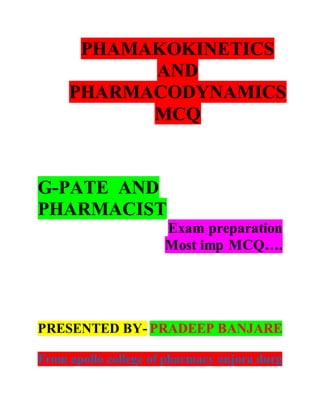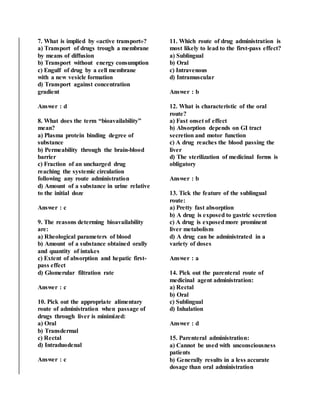The document is a collection of multiple-choice questions and answers focusing on pharmacokinetics and pharmacodynamics for exam preparation in pharmacy. It covers various aspects of drug absorption, distribution, metabolism, excretion, and mechanisms of action, along with key terminology relevant to the field. Additionally, it includes questions on drug interactions and effects related to dose response.










